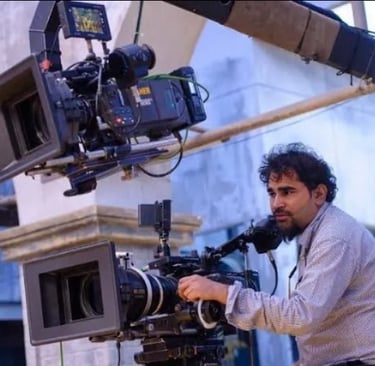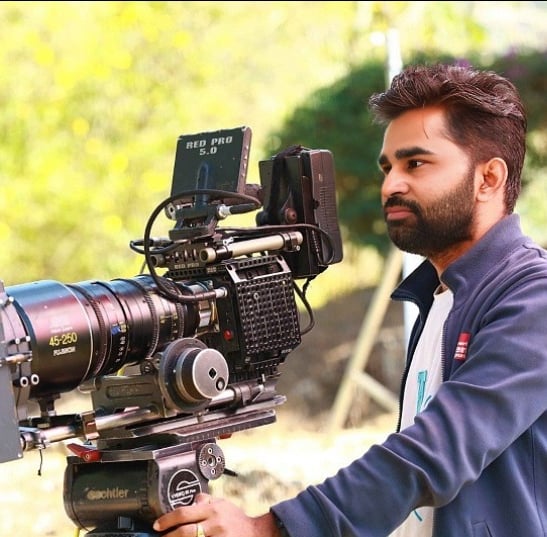Kharak Singh Cameraman




Kharak Singh Cinematographer: A Remarkable Journey From Bombay to Amaran
The landscape of Indian cinema has been shaped by countless creative minds who work tirelessly behind the scenes. Among them stands Kharak Singh cinematographer, a committed visual craftsman whose career spans nearly three decades and includes work on some of the nation’s most memorable films. From the emotionally charged classic Bombay in 1995 to the high-intensity Tamil blockbuster Amaran in 2024, his contributions reveal a deep understanding of cinematic storytelling and an unwavering dedication to the art of camera work.
Kharak Singh’s path in cinema began during an era when filmmaking relied heavily on manual skill, on-set discipline and a clear eye for detail. There were no shortcuts or digital conveniences then; the camera operator had to move with precision, follow the smallest choreography and understand the story’s heartbeat. This early exposure shaped Singh into a professional capable of handling the visual demands of both traditional and modern filmmaking.
One of the most defining moments of his early career was his involvement in Bombay (1995), a film now etched into the history of Indian cinema. Directed by Mani Ratnam and starring Manisha Koirala and Arvind Swamy, Bombay explored the fragile relationship between love and communal conflict. The film required visuals that were both poetic and powerful, and Singh was part of the camera team responsible for capturing its emotional depth. Working in an environment led by one of India’s most visionary directors, he learned the importance of capturing raw human emotion while maintaining technical excellence.
The visuals of Bombay remain iconic even today. Whether it was the delicate romance between the protagonists or the tense atmosphere of the communal riots, the cinematography played a crucial role in shaping the film’s atmosphere. Singh’s experience on the film strengthened his understanding of how every frame serves the larger narrative. The movie continues to hold an IMDb rating of 8.1, a reflection of its lasting emotional and visual appeal. For Singh, being part of such an influential project became a strong foundation on which he would build the rest of his career.
Years later, after accumulating experience across various sets and production styles, Kharak Singh took on new challenges with the Punjabi film Darra (2016). This film demanded a different cinematic approach rooted in the soil of Punjab. Unlike the neatly structured visuals of mainstream romance and drama, Darra required a raw and grounded visual tone that expressed rural realities and interpersonal tensions. Singh worked as the camera operator, responsible for giving the film its sense of authenticity.
The world of Darra was filled with emotional conflict, cultural identity and intense dramatic moments. Singh’s ability to capture wide landscapes, tight emotional close-ups and action-driven sequences allowed the film to maintain a sense of realism. Though the film holds a moderate IMDb rating of 5.3, its visuals stand out for their sincerity and honesty. The project highlighted Singh’s capacity to adapt to different regional storytelling formats and to elevate scenes through thoughtful camera movement and framing. His experience ensured that the visuals remained true to the film’s rural backdrop.
With the evolution of technology and filmmaking style, Kharak Singh seamlessly transitioned into the world of digital cinema. His work continued into the 2020s, where high-end equipment, faster shooting processes and complex action choreography became the norm. In 2024, his expertise placed him in one of Tamil cinema’s most awaited films—Amaran, starring Sivakarthikeyan, Sai Pallavi and Bhuvan Arora. Directed by Rajkumar Periasamy, Amaran became a major highlight of the year, receiving praise for its emotionally gripping narrative, strong performances and visually compelling presentation.
Working as the camera operator on Amaran, Singh contributed to some of the most dynamic and expressive visuals in the film. The movie required a balanced blend of emotional storytelling and intense action. This meant that the camera had to move with both force and sensitivity, following the rhythm of the actors and the flow of the script. Singh handled everything from large-scale outdoor sequences to intimate character moments, ensuring that each shot supported the film’s visual tone.
Sivakarthikeyan’s energetic screen presence, Sai Pallavi’s deeply expressive performance style and Bhuvan Arora’s strong character portrayal required consistent coordination from the camera team. Singh worked carefully to ensure that every frame captured their performances in the best way possible. Amaran earned an IMDb rating of 8.1, and its well-executed cinematography played an essential part in shaping that reception. Singh’s ability to work under high-pressure situations and deliver polished visuals added a layer of strength to the film’s technical achievements.
Across all these films, a clear pattern emerges in the work of kharak singh cinematographer. He is a technician who values storytelling as much as technical skill. His visuals are never overwhelming or showy just for effect. Instead, they support the narrative by capturing emotion, movement and atmosphere with clarity. Whether it is the simplicity of a quiet moment or the complexity of an action sequence, Singh approaches each shot with discipline and sensitivity.
Another hallmark of his journey is adaptability. The Indian film industry has undergone massive changes over the past three decades. Technology has shifted from analog to digital, from handheld setups to advanced stabilizers and cranes, from simple lighting techniques to highly engineered visual designs. Singh has evolved with each stage, embracing new equipment and new methods while keeping his artistic instincts intact. His ability to stay relevant in such a rapidly changing industry is a testament to his passion and willingness to learn.
Beyond the camera, Singh is known for his calm and coordinated working style. Film sets can often be stressful environments, with tight schedules, demanding scenes and constant adjustments. His collected presence allows directors and actors to trust him, especially during challenging sequences. A camera operator’s role may not always be visible to the audience, but within the world of filmmaking, it is one of the most crucial positions that determine the quality of the final visual output. Singh’s consistency and focus make him a valuable contributor to every project he undertakes.
Kharak Singh’s connection to multiple film industries also sets him apart. Moving between Hindi, Punjabi and Tamil cinema, he has gained a rare diversity of experience. Each region has its own cinematic language, its own audience expectations and its own cultural rhythms. Singh’s ability to blend into these different ecosystems shows his respect for the story above all else. He approaches each film not as a technician bound to one style, but as an artist capable of understanding and adapting to the cultural tone of the project.
Today, as cinema continues to evolve at an unprecedented speed, professionals like Kharak Singh remind the industry that experience combined with adaptability can lead to exceptional visual storytelling. The films he has contributed to form a unique timeline in Indian cinema’s growth—from the emotional depth of Bombay to the grounded reality of Darra and the modern cinematic intensity of Amaran. Each film reflects a stage of his evolution as a cinematographer and camera operator.
The name kharak singh cinematographer continues to build recognition as more people learn about the technicians who bring stories to life behind the scenes. His journey shows that the heart of filmmaking lies not just in its stars or its directors, but also in the individuals who craft the visual language that shapes the audience’s experience. Every frame he has worked on carries a part of his dedication and artistic insight.
As his career continues forward, it is clear that Kharak Singh’s work will remain a vital part of the films he helps create. His story stands as an inspiring reminder that behind every great film lies a team of artists whose vision is captured through the lens—quietly, consistently and with remarkable skill.